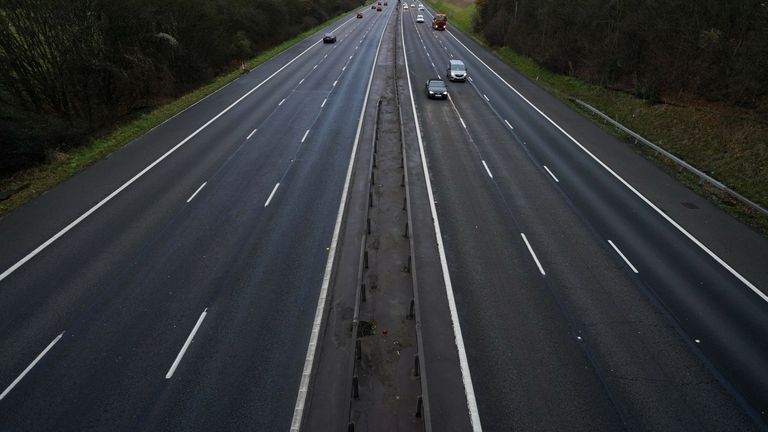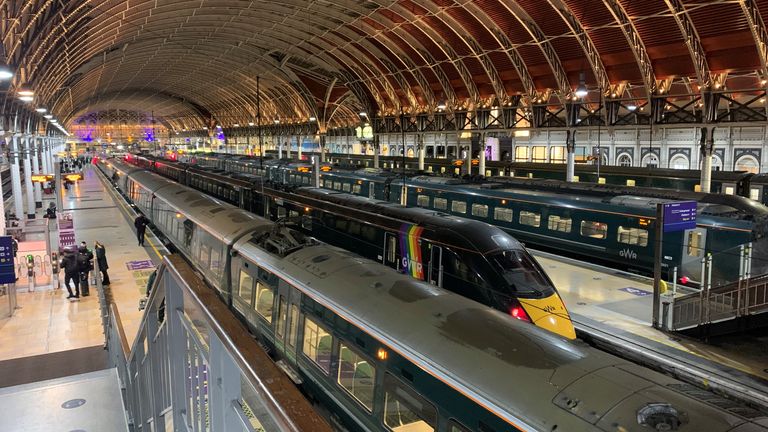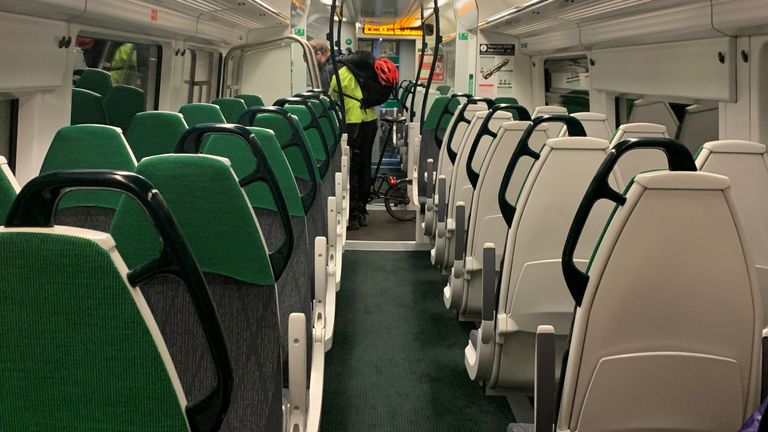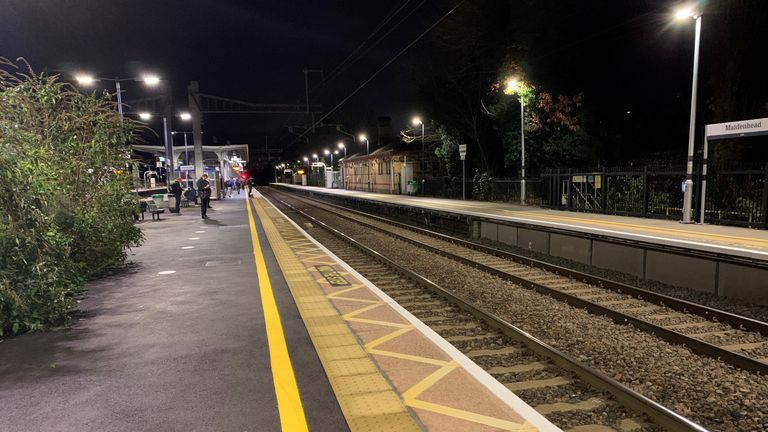Deserted motorways and empty trains: WFH guidance has immediate impact on transport
After people were advised to work from home to tackle the “tidal wave” of Omicron cases – data has shown the government guidance has had an immediate impact on the roads and public transport.
Commuters reported seeing fewer people on the roads and on buses and trains in England on Monday morning, with pictures showing deserted motorways, train stations and carriages.
It comes after Boris Johnson last week urged everyone to work from home if they can from today and get their boosters in a bid to tackle the highly-infectious Omicron variant of COVID-19.
Figures published by location technology firm TomTom revealed the level of road congestion at 8am in major cities across England fell sharply compared with the previous two Mondays.
London’s congestion levels dropped from 72% on 29 November and 69% on 6 December to 60% today.
Birmingham saw an even more dramatic fall in congestion levels, which dropped from 87% on 29 November to 64% last Monday and 55% today.
Similarly, Manchester experienced a 36% drop in congestion levels today (53%) compared to 29 November (89%).
And congestion levels in the seaside city of Brighton have also steadily declined, from 59% on 29 November to 55% on 6 December to 44% today.
Rapid lateral flow home testing kits have run out on government’s website
Tube and bus use declines in London
Transport for London (TfL) reported a fall in demand for Tube and bus travel services on Monday morning.
Around one million journeys were made on the London Underground between the start of service and 10am – an 18% reduction compared with 1.22 million during the same period a week ago.
Bus usage also saw a 5% decline – from 1.21 million journeys to 1.15 million over the same period.
A TfL spokesman said: “The government’s decision to require people to work from home from today will naturally result in a drop in TfL’s ridership.
“We continue to assess what impact this announcement has on overall ridership levels, and crucially our operating income which relies heavily on fares revenue.”
Train usage falls
Network Rail said the number of people using 16 major railway stations in England and Scotland between 6am and 9.30am this morning was down compared with last week.
It said the stations with the largest week-on-week reductions were Cannon Street (38%), Leeds Central (35%), Waterloo (34%), Kings Cross (28%), Liverpool Street (26%) and Euston (25%), Reading (25%) and Bristol (25%).
Other stations that saw a fall in usage include Birmingham New Street (24%), Charing Cross (23%), Paddington (20%), Manchester Piccadilly (20%), Liverpool Lime Street (17%), Edinburgh Waverley (11%), Victoria (8%) and Glasgow Central (7%).
What commuters are saying
One Twitter user wrote: “Waiting on my bus to work and the roads are very quiet this morning.
“I think the work from home (guidance) has already kicked in.”
Photos of a near-empty Waterloo station were shared on Twitter by @lucitelu, with the caption: “Stations are quiet again. This is Waterloo, 9:15.”
Someone else tweeted: “I’m in a flat slap bang in the middle of London and (the) roads are unbelievably quiet now.”
Another Twitter user in the capital wrote: “Everywhere is extremely quiet again. Have school holidays started? Or is everyone working from home? No one at the bus stop. No traffic. No people walking. Very weird for a Monday.”
More transport data
Several other cities experienced reduced road congestion at 8am on Monday, according to TomTom.
• Hull congestion levels dropped from 71% on 29 November to 64% on 6 December and 57% on Monday
• Leeds – from 74% to 56% and 43%
• Leicester – from 98% to 60% and 51%
• Bristol – from 60% to 64%, but fell to 41%
• Liverpool – from 70% to 53%, but then up to 58%






